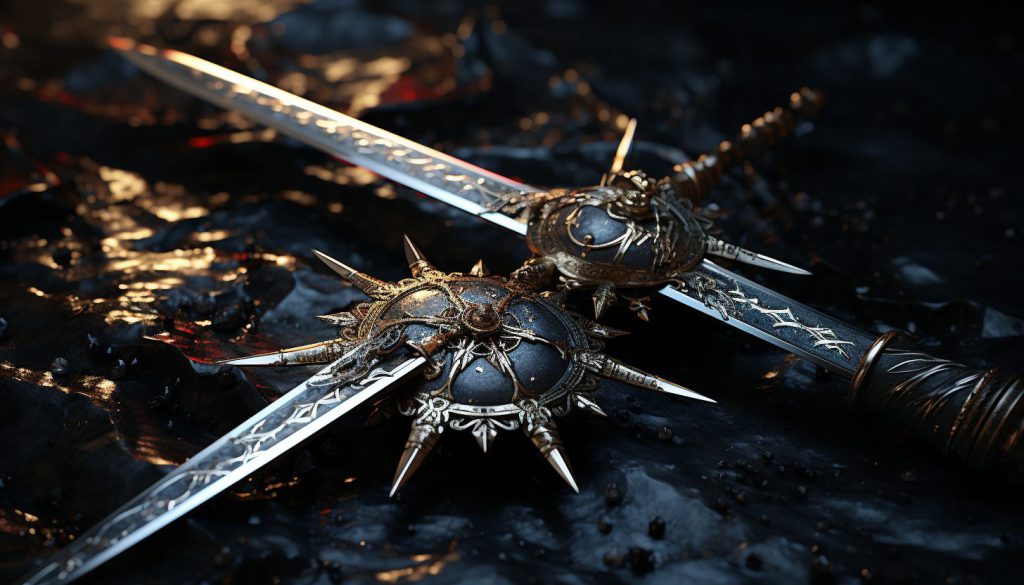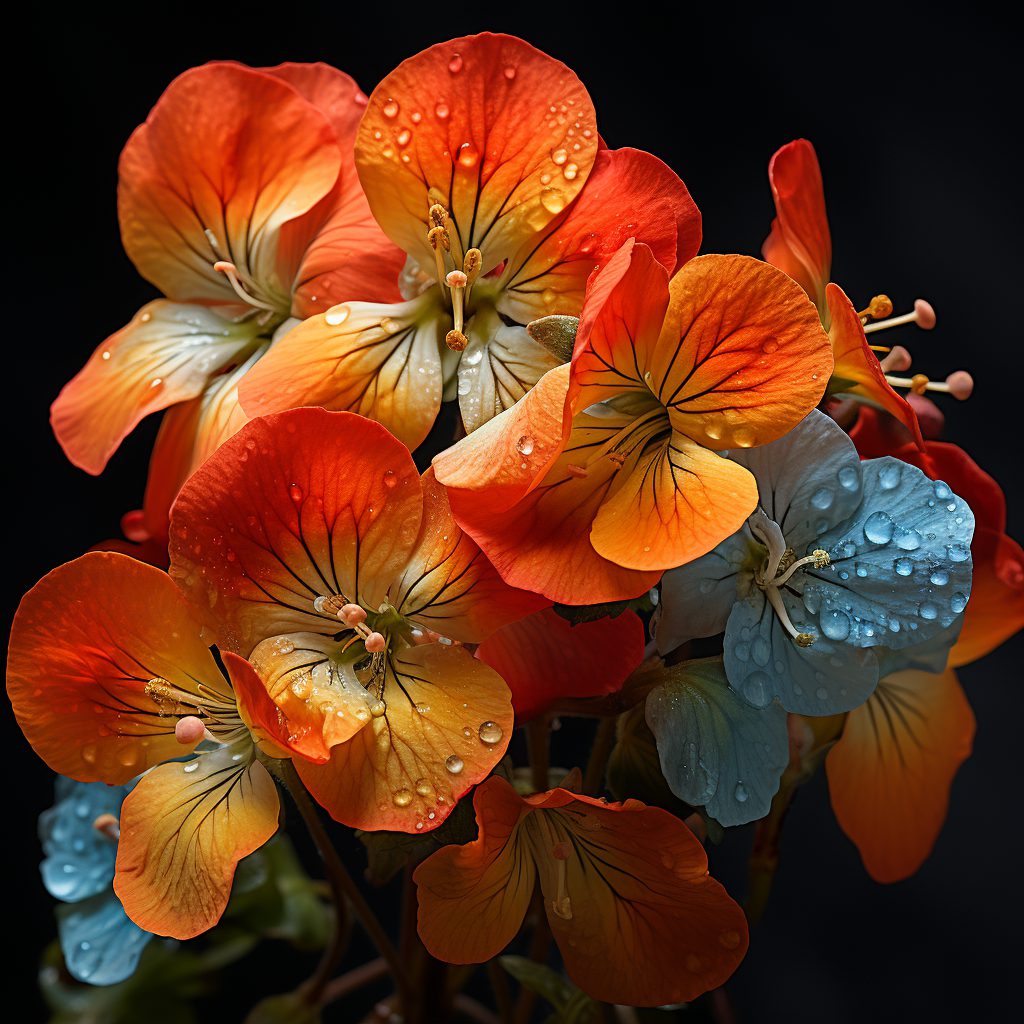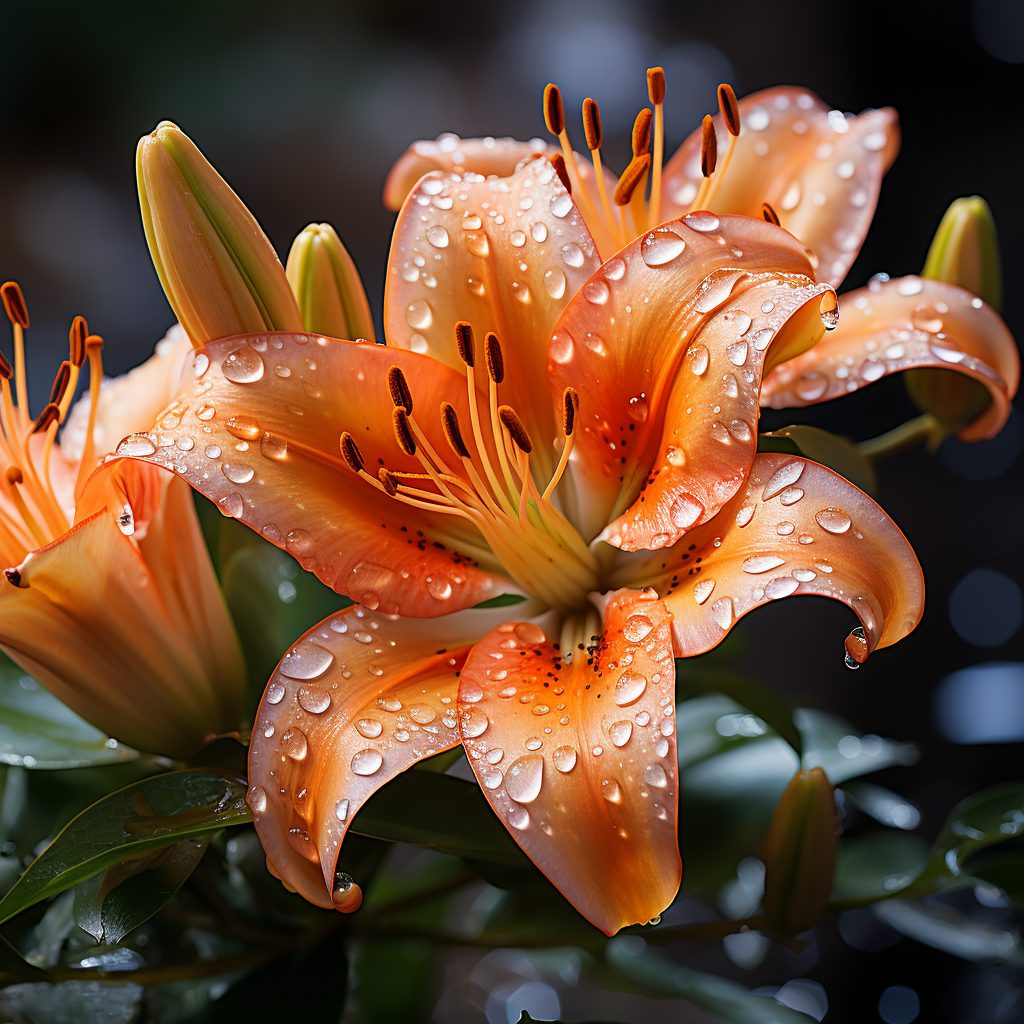War symbols have long been embedded in the tapestry of human history, serving as potent reminders and representations of conflict, bravery, and the complex nature of warfare. These symbols, steeped in tradition and often shrouded in mystery, offer insight into the ways different cultures perceive and commemorate war.
The importance of war symbols cannot be overstated. They are not merely artistic expressions but are imbued with deep meanings, encapsulating the essence of battle and the human spirit’s resilience. War symbols are wielded to inspire, commemorate, warn, and sometimes, to invoke the very essence of conflict and valor they represent.
The Quintessential Symbol of War
Among the myriad of symbols associated with war, one stands out for its ubiquity and universal recognition: The Crossed Swords. This emblem is synonymous with battle and heroism, often used to signify military might and the indomitable spirit of warriors. The Crossed Swords are not confined to a particular culture or epoch, making them a timeless and universal representation of war and valor. Their simple yet powerful imagery conveys the clash of forces and the inherent danger and dynamism of warfare, making them an enduring symbol that continues to resonate with people around the globe.
Native and Indigenous War Symbols
Indigenous cultures around the world have developed their unique symbols to represent war, each carrying distinct meanings and histories rooted in their respective traditions and mythologies.
- 1. Two Arrows (Native American): The Two Arrows symbol is deeply ingrained in Native American culture, representing preparedness and defense. The arrows pointing in opposite directions signify conflict, while their fletching embodies the community’s support. This symbol is often used to invoke protection and strength during times of war.
- 2. Tūmatauenga (Māori): Tūmatauenga is the Māori god of war, humans, and hunting. Represented by fierce facial expressions in carvings and tattoos, Tūmatauenga embodies the warrior spirit. He is revered and invoked for protection and courage in battle, symbolizing the relentless pursuit of victory and justice.
- 3. Tsantsa (Amazon): Tsantsa refers to the shrunken heads created by the indigenous tribes of the Amazon. These were not only war trophies but also powerful symbols believed to harness the spirit of the vanquished enemy. Tsantsa was used in rituals to ward off evil spirits and bring strength and courage to the warriors.
European War Symbols
Europe, with its rich and tumultuous history, has given birth to various symbols of war, each telling a story of its own, embodying the valor, struggle, and cultural ethos of the people who created them.
- 4. Z (Russian): The letter ‘Z’ symbolizes Russian military strength and victory. Often seen on military vehicles and equipment, it stands as a mark of solidarity and support among the troops, symbolizing unity and readiness for battle.
- 5. Mjölnir (Norse): Mjölnir, or Thor’s Hammer, is a potent Norse symbol of protection and might. As the weapon of the thunder god, Thor, it represents power, strength, and valor. Warriors used this symbol for protection and courage in the face of the enemy.
- 6. Achilles’ Shield (Greek): The shield of Achilles is one of Greek mythology’s most well-known symbols of war and heroism. Crafted by the god Hephaestus, it’s a weapon and a piece of art that tells a story, embodying the glory and tragedy of war.
- 7. The Boar (Celtic): In Celtic symbolism, the boar stands for bravery, strength, and ferocity. Celtic warriors often adorned their helmets with boar images to invoke its power and protection in battle, making it a revered symbol of war and courage.
- 8. Svetovit (Slavic): Svetovit is a significant deity in Slavic mythology, often associated with war and divination. Represented with four heads, each looking in a different direction, Svetovit symbolizes omnipresence and omniscience, providing guidance and strength to warriors in battle.
Aztec and African War Symbols
Aztec and African cultures have a rich tapestry of symbols that encapsulate their unique perspectives on war, conflict, and valor. These symbols are deeply entrenched in their history and spiritual practices, providing insight into their views on the nature of life and conflict.
- 9. Xochiyáoyotl (Aztec): Xochiyáoyotl is the Aztec symbol of war, often depicted as a flower and associated with the goddess Xochiquetzal. This symbol represents the duality of life and death, beauty and danger, highlighting the Aztecs’ understanding of the cyclical nature of existence and the inevitability of conflict.
- 10. Akoben (African): Akoben is a war horn symbol in African culture, specifically among the Akan people. It represents vigilance and wariness. As a call to action, it symbolizes alertness, readiness for battle, and the need to protect one’s community from harm.
Hindu War Symbols
Hinduism, with its myriad of gods and goddesses, offers various symbols associated with war and protection. These symbols are not just emblematic of conflict but also represent the spiritual struggle one undergoes in life, making them deeply significant and revered.
- 11. Shanka (Hindu): The Shanka, or conch shell, is a vital symbol in Hinduism. Often seen in the hands of the god Vishnu, it represents the primordial sound of creation, Om. In the context of war, the blowing of the Shanka is a call to arms, signaling the commencement of battle and instilling courage among warriors.
- 12. Vajra (Hindu): The Vajra is a powerful symbol of indestructibility and irresistible force. Often associated with the god Indra, it represents thunder and lightning, embodying the power and fury of the storm. In war, it is a symbol of unyielding strength and dominance over enemies.
War Symbols in Flora
Flora, with its diverse and vibrant forms, has been a source of inspiration and symbolism for various cultures. Certain plants and flowers have been associated with war due to their characteristics, historical use in battles, or mythological connections.
- 13. Crab Blossom: The Crab Blossom is often associated with protection and a defensive stance in various cultures. Its hard petals symbolize armor and defense, making it a symbol of protection during war. The flower’s unique structure, resembling a crab’s claws, further emphasizes its association with defense and safeguarding.
-
 14. Nasturtium: Nasturtium, with its vibrant and fiery colors, symbolizes conquest and victory in battle. In the language of flowers, it is often associated with heroism and the warrior’s resolve. Its peppery taste was also believed to protect against illness, symbolizing health and strength in conflict.
14. Nasturtium: Nasturtium, with its vibrant and fiery colors, symbolizes conquest and victory in battle. In the language of flowers, it is often associated with heroism and the warrior’s resolve. Its peppery taste was also believed to protect against illness, symbolizing health and strength in conflict. - 15. Tansy: Tansy symbolizes resistance and immortality. With its bright yellow flowers that resemble the sun, it is often associated with life and vitality. In the context of war, Tansy represents endurance and the ability to withstand challenges, embodying the spirit of resilience and perseverance in the face of adversity.
- 16. Hyssop: Hyssop, mentioned in religious texts, is often associated with purification and cleansing. In the context of war, it symbolizes the desire to maintain purity and righteousness even in conflict. Its medicinal properties, which were utilized to treat soldiers on the battlefield, further underline its connection to healing and protection during war.
-
 17. Orange Lily: The Orange Lily, with its vibrant color, symbolizes passion, energy, and warmth. In various cultures, it represents honor and the cause worth fighting for. Its bold presence often signifies the intensity and fervor associated with conflict and battle.
17. Orange Lily: The Orange Lily, with its vibrant color, symbolizes passion, energy, and warmth. In various cultures, it represents honor and the cause worth fighting for. Its bold presence often signifies the intensity and fervor associated with conflict and battle. - 18. Dill: Dill, a herb known for its culinary and medicinal uses, also holds symbolic value. It has been associated with protection and defense. In ancient times, it was believed that dill had magical properties that could defend against negative energies and harm, making it a protective symbol in times of war.
- 19. Peach Tree: In various mythologies, the Peach Tree is a symbol of life and immortality. Its fruit, the peach, is often associated with the gods and is believed to grant life and vitality. In the context of war, the Peach Tree represents the pursuit of eternal glory and the valor of warriors who aim for immortality through their deeds in battle.
War Symbols in Crystals
-
 20. Agate: Known for its grounding and stabilizing properties, Agate is a crystal that warriors have used for centuries. It is believed to enhance the physical strength and stamina of the wearer, making it a favored talisman for soldiers heading into battle. Its protective qualities also shield individuals from negative energies, providing support and safety during conflict.
20. Agate: Known for its grounding and stabilizing properties, Agate is a crystal that warriors have used for centuries. It is believed to enhance the physical strength and stamina of the wearer, making it a favored talisman for soldiers heading into battle. Its protective qualities also shield individuals from negative energies, providing support and safety during conflict. - 21. Lapis Lazuli: Lapis Lazuli, with its deep celestial blue, has been a symbol of royalty and honor, gods and power, spirit, and vision since ancient times. Warriors used it as a protective amulet, believing it would bring them victory. It is a universal symbol of wisdom and truth, often used to enhance enlightenment and problem-solving, crucial for strategic planning in war scenarios.
- 22. Smoky Quartz: Smoky Quartz is a powerful grounding stone known for its ability to neutralize negative vibrations and protect against electromagnetic smog. In the realm of war, it is utilized for its capacity to alleviate fear, stress, and anxiety, providing soldiers with the calm and resilience needed in the heat of battle.
- 23. Rose Quartz: While Rose Quartz is widely recognized as a stone of love and compassion, it also plays a role in the context of war. It is believed to heal emotional wounds and traumas, fostering forgiveness and reconciliation. In doing so, it aids in resolving conflicts and disputes, ultimately promoting peace and understanding among opposing parties.
Animal Symbols of War
- 24. Boar: The boar symbolizes bravery, assertiveness, and confrontation. The boar symbolizes war and battle in various cultures due to its aggressive nature and formidable presence. Warriors often adorned their shields and banners with boar imagery to signify their readiness for war and instill fear in their enemies’ hearts.
-
 25. Bees: Bees, while primarily known for their industriousness and teamwork, also symbolize war and victory in some cultures. Their stings can be deadly, and their swarming behavior is often likened to armies in battle. Using bees and bee imagery in war denotes both defensive and offensive capabilities, reflecting the balance between protection and aggression.
25. Bees: Bees, while primarily known for their industriousness and teamwork, also symbolize war and victory in some cultures. Their stings can be deadly, and their swarming behavior is often likened to armies in battle. Using bees and bee imagery in war denotes both defensive and offensive capabilities, reflecting the balance between protection and aggression. - 26. Bear: The bear symbolizes strength, courage, and leadership. It is often associated with the qualities of a warrior due to its power and ability to inspire fear and respect. In various cultures, the bear is seen as a protector and a symbol of warfare, embodying physical and spiritual strength.
- 27. Elephants: Elephants have been integral to warfare in several cultures due to their immense size and strength. They are symbols of might and memory, often leading armies into battle with warriors mounted on their backs. The elephant is also associated with wisdom and strategy, crucial elements in any military endeavor.
War Symbols in Literature and Mythology
- 28. War Horseman (Literature): The War Horseman, often depicted in various pieces of literature and religious texts, symbolizes death and destruction. This figure is usually portrayed as a rider on a red horse, wielding a sword, and is one of the Four Horsemen of the Apocalypse, representing war and the chaos it brings.
- 29. Tutankhamun’s Dagger (Egyptian): Found in the tomb of the famous Egyptian pharaoh, Tutankhamun’s Dagger is a symbol of royal power and protection. Made of iron, gold, and crystal, it represents the might of the Egyptian rulers and their readiness to defend their kingdom against enemies. This artifact is not only a symbol of war but also a testament to the advanced craftsmanship and artistry of ancient Egypt.
Conclusion: The Significance of Recognizing and Understanding War Symbols
War symbols have been a part of human history and culture for centuries, representing power, valor, and the complex nature of conflict. These symbols, while diverse and rooted in different traditions, share common themes of strength, protection, and the relentless spirit of warriors. Understanding these symbols allows us to gain insight into how various cultures perceive and interpret war and conflict. It also provides a deeper appreciation for the art, literature, and mythology that have been inspired by these powerful symbols, reflecting the human experience and the timeless struggle between peace and war.


 14. Nasturtium: Nasturtium, with its vibrant and fiery colors, symbolizes conquest and victory in battle. In the language of flowers, it is often associated with heroism and the warrior’s resolve. Its peppery taste was also believed to protect against illness, symbolizing health and strength in conflict.
14. Nasturtium: Nasturtium, with its vibrant and fiery colors, symbolizes conquest and victory in battle. In the language of flowers, it is often associated with heroism and the warrior’s resolve. Its peppery taste was also believed to protect against illness, symbolizing health and strength in conflict. 17. Orange Lily: The Orange Lily, with its vibrant color, symbolizes passion, energy, and warmth. In various cultures, it represents honor and the cause worth fighting for. Its bold presence often signifies the intensity and fervor associated with conflict and battle.
17. Orange Lily: The Orange Lily, with its vibrant color, symbolizes passion, energy, and warmth. In various cultures, it represents honor and the cause worth fighting for. Its bold presence often signifies the intensity and fervor associated with conflict and battle. 20. Agate: Known for its grounding and stabilizing properties,
20. Agate: Known for its grounding and stabilizing properties,  25. Bees: Bees, while primarily known for their industriousness and teamwork, also symbolize war and victory in some cultures. Their stings can be deadly, and their swarming behavior is often likened to armies in battle. Using bees and bee imagery in war denotes both defensive and offensive capabilities, reflecting the balance between protection and aggression.
25. Bees: Bees, while primarily known for their industriousness and teamwork, also symbolize war and victory in some cultures. Their stings can be deadly, and their swarming behavior is often likened to armies in battle. Using bees and bee imagery in war denotes both defensive and offensive capabilities, reflecting the balance between protection and aggression.